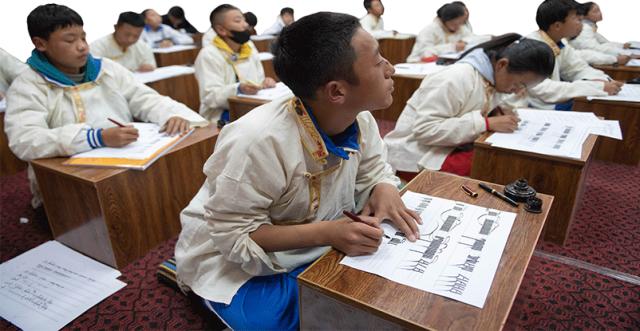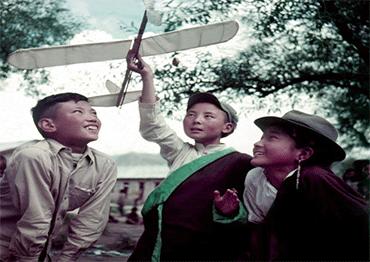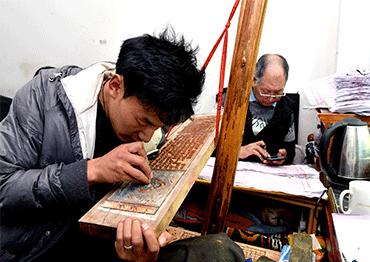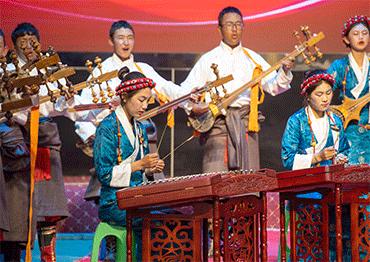“Learning Tibetan is not only essential for personal growth, but also to gain a deeper understanding of our history and culture,” said Jimatso, a Tibetan deputy research fellow at the IEA. With her linguistic knowledge, she is able to read ancient Tibetan manuscripts from the Mogao Grottoes in Dunhuang, Gansu Province and decipher worn inscriptions on old stone steles.
Before Xizang’s peaceful liberation in 1951, only around 2,000 monks and students from aristocratic families studied in government-funded and private schools, while 95 percent of the population, who were serfs and slaves, were denied the right to education, according to a series of white papers released by China’s State Council Information Office since the 1990s.
Even XMU, Xizang’s first public higher learning institution established in 1958, is located outside the region in Xianyang, Shaanxi Province – the result of local resistance to public schooling for ordinary Tibetans.
Qamdo Primary School, the first modern school within the region, was established in March 1951. Located in eastern Xizang, the school was led by Chinese scholars Li Anzhai (1900- 1985), a Yale-trained anthropologist and Tibetologist, and his wife Yu Shiyu (1904-1969), a bibliographer and educator. Their academic research on Xizang’s history and culture laid a foundation for the region’s modern educational system, Yin told NewsChina.
In January 1951, about 60 students from various backgrounds were recruited and divided into three classes to learn written Tibetan. A few months later, the school formally launched with a curriculum that included math, basic science, art and music. By 2018, the school (now called Qamdo Experimental Primary School) had expanded to 15,268 square meters, serving 2,240 students with 151 teachers.
Classes were taught in Tibetan from the start. When the autonomous region was founded in 1965, Xizang had 56,000 primary school students, 1,359 middle school students and 12,000 adult learners among a population of more than 1.3 million, according to local educational authorities.
Huge progress has been made since then. By the end of 2014, the illiteracy rate among young and middle-aged Tibetans had dropped to less than 0.57 percent, according to the white paper Successful Practice of Regional Ethnic Autonomy in Xizang, published by the State Council Information Office in September 2015.
“Tibetan-language education fosters a strong sense of ethnic identity and pride among Tibetan students and helps them better understand the uniqueness and value of their ethnic culture amid external influences in a globalized world,” Jimatso told NewsChina.
Since 1985, all tuition, food and boarding expenses for students in pastoral areas of Xizang have been fully covered by the region’s government. Even earlier, free education was available for all primary and middle school students in Xizang.
In 2007, Xizang became the first region in China to offer free education to all students in the nine-year compulsory program, one year before the policy was extended nationwide. In 2012, Xizang also became the first region in China to provide 15 years of free education, from preschool through high school. Xinjiang Uygur Autonomous Region followed in 2017 and Jungar Banner in Ordos, Inner Mongolia Autonomous Region joined in 2025. Elsewhere in China, the nine-year compulsory education policy remains standard.
Parents can decide whether their children receive boarding services. Boarding students return home on weekends and holidays. At a press conference in Lhasa on March 28, Xu Zhitao, vice chairman of Xizang Autonomous Region, said the number of boarders changes yearly depending on family preference, but the curriculum is the same for both day and boarding students since they attend the same schools.
Ngawang Wangdrak, principal of a primary school in Nagqu at an elevation of 4,750 meters, told China News Service in December 2024 that half of the school’s 1,343 students board due to the long distances between home and school. To foster personal interests, the school offers extracurricular courses – paintings and handicrafts made by students decorate the classroom walls.
By 2024, Xizang’s gross enrollment rate for preschool education reached 91.33 percent, the completion rate for nine-year compulsory education hit 97.86 percent and the gross enrollment rate for senior high school reached 91.56 percent, according to the white paper Human Rights in Xizang in the New Era, released in March by the State Council Information Office.
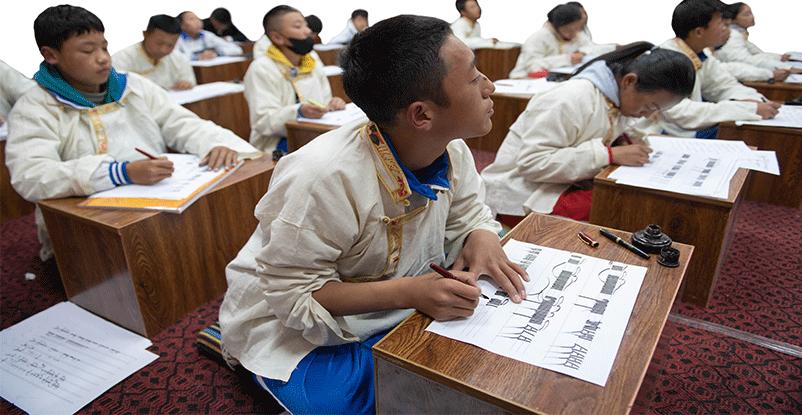
 Old Version
Old Version
